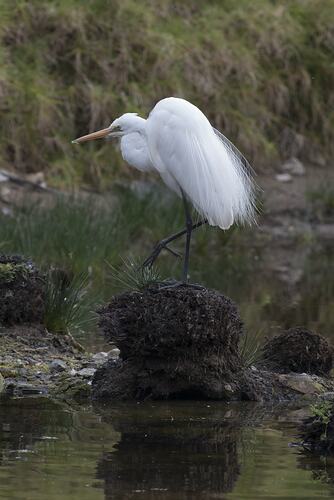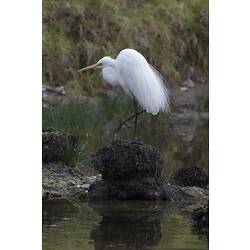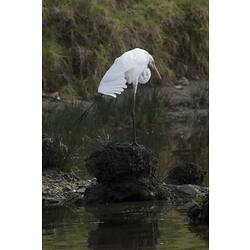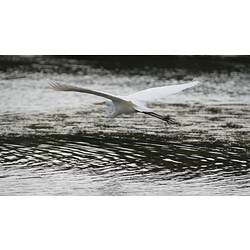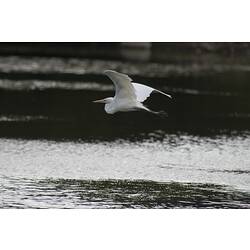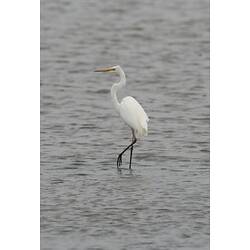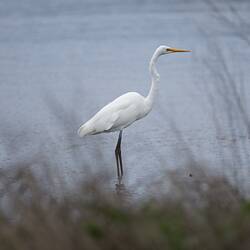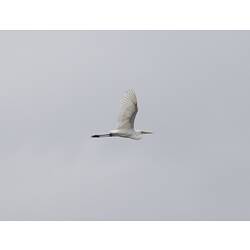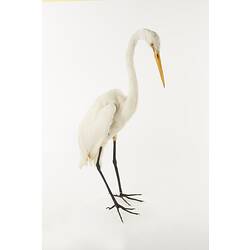General Description
Body completely white, legs black. Facial skin and bill are yellow. During the breeding season, the skin becomes green and the bill becomes black. Long feathers (nuptial plumes) also appear, hanging down the lower back and legs. Bill to tail length is up to 1 m. Is similar to the other white egrets in Australia, but can be identified by its neck length, which is longer than the body.
Biology
Eastern Great Egrets make a harsh croaking sound when calling. They extend their legs straight behind the body when flying. At night, they roost in groups. They normally feed alone, eating fish, crustaceans, molluscs, insects, small reptiles and frogs. They hunt by wading through the water, stabbing at prey with their bill. Egrets breed in mixed species colonies, commonly with other egret species. Both males and females build the nest, which is a platform made of sticks located in a tree above water. They may re-use nests from previous years. The usual clutch size is two to three eggs, which are incubated and then cared for by both parents. It is Australia's largest egret.
Distribution
South-eastern, south-western and northern mainland Australia and Tasmania.
Habitat
Freshwater wetlands and swamps.
More Information
-
Animal Type
-
Animal SubType
-
Brief Id
A slender, white waterbird with a long neck and a long pointed yellow bill. The neck is longer than the body.
-
Colours
White, Black, Yellow
-
Maximum Size
1 m
-
Habitats
-
Diet
Carnivore
-
Diet Categories
Crustaceans, Insects, Frogs
-
Endemicity
-
Commercial
No
-
Conservation Statuses
CITES: Not listed, FFG Threatened List: Vulnerable, EPBC Act 1999: Not listed, IUCN Red List: Least Concern
-
Taxon Name
-
Common Name
Great Egret
-
Kingdom
-
Phylum
-
Subphylum
-
Class
-
Order
-
Family
-
Genus
-
Species Name
alba
